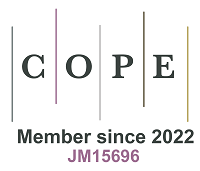REFERENCES
1. Abubakr M, Abbas AT, Tomaz I, et al. Sustainable and smart manufacturing: an integrated approach. Sustainability 2020;12:2280.
2. M Mabkhot M, Ferreira P, Maffei A, et al. Mapping industry 4.0 enabling technologies into united nations sustainability development goals. Sustainability 2021;13:2560.
3. Hundman K, Constantinou V, Laporte C, Colwell I, Soderstrom T. Detecting spacecraft anomalies using lstms and nonparametric dynamic thresholding. In: Proceedings of the 24th ACM SIGKDD International Conference on Knowledge Discovery & Data Mining; 2018. pp. 387-95.
4. Rincon-Yanez D, Crispoldi F, Onorati D, et al. Enabling a semantic sensor knowledge approach for quality control support in cleanrooms. In: International Semantic Web Conference. vol. 2980; 2021.
5. Cao Q, Giustozzi F, Zanni-Merk C, de Bertrand de Beuvron F, Reich C. Smart condition monitoring for industry 4.0 manufacturing processes: An ontology-based approach. Cybernetics and Systems 2019;50:82-96.
6. Zhou B, Svetashova Y, Gusmao A, et al. SemML: Facilitating development of ML models for condition monitoring with semantics. J Web Semant 2021;71:100664.
7. Weese M, Martinez W, Megahed FM, Jones-Farmer LA. Statistical learning methods applied to process monitoring: An overview and perspective. J Qual Technol 2016;48:4-24.
8. Zhang C, Song D, Chen Y, et al. A deep neural network for unsupervised anomaly detection and diagnosis in multivariate time series data. In: Proceedings of the AAAI Conference on Artificial Intelligence. vol. 33; 2019. pp. 1409-16.
9. Fenza G, Gallo M, Loia V. Drift-aware methodology for anomaly detection in smart grid. IEEE Access 2019;7:9645-57.
10. Pittino F, Puggl M, Moldaschl T, Hirschl C. Automatic anomaly detection on in-production manufacturing machines using statistical learning methods. Sensors 2020;20:2344.
11. Wu D, Jiang Z, Xie X, et al. LSTM learning with Bayesian and Gaussian processing for anomaly detection in industrial IoT. IEEE Trans Ind Inf 2019;16:5244-53.
12. Ergen T, Kozat SS. Unsupervised anomaly detection with LSTM neural networks. IEEE Trans Neural Netw Learn Syst 2019;31:3127-41.
13. Siami-Namini S, Tavakoli N, Namin AS. A comparison of ARIMA and LSTM in forecasting time series. In: 2018 17th IEEE International Conference on Machine Learning and Applications (ICMLA). IEEE; 2018. pp. 1394-401.
14. Park BE, Kim JS, Lee JK, Lee IB. Anomaly detection in a hyper-compressor in low-density polyethylene manufacturing processes using WPCA-based principal component control limit. Korean J Chem Eng 2020;37:11-18.
15. Arena E, Corsini A, Ferulano R, et al. Anomaly detection in photovoltaic production factories via monte carlo pre-processed principal component analysis. Energies 2021;14:3951.
16. Falanga M, De Lauro E, Petrosino S, Rincon-Yanez D, Senatore S. Semantically enhanced IoT-oriented seismic event detection: an application to Colima and Vesuvius volcanoes. IEEE Internet Things J 2022; doi: 10.1109/JIOT.2022.3148786.
17. Mokhtari S, Abbaspour A, Yen KK, Sargolzaei A. A machine learning approach for anomaly detection in industrial control systems based on measurement data. Electronics 2021;10:407.
18. Ahamed J, Koli AM, Ahmad K, Jamal MA, Gupta BB. CDPS-IoT: cardiovascular disease prediction system based on iot using machine learning. IJIMAI 2022;7:78-86.
19. Basora L, Olive X, Dubot T. Recent advances in anomaly detection methods applied to aviation. Aerospace 2019;6:117.
20. Nanduri A, Sherry L. Anomaly detection in aircraft data using Recurrent Neural Networks (RNN). In: 2016 Integrated Communications Navigation and Surveillance (ICNS). IEEE; 2016. pp. 5C2-.
21. Mori R. Anomaly detection and cause analysis during landing approach using recurrent neural network. J Aero Inf Syst 2021;18:679-85.
22. Ding N, Ma H, Gao H, Ma Y, Tan G. Real-time anomaly detection based on long short-Term memory and Gaussian Mixture Model. Computers & Electrical Engineering 2019;79:106458.
23. Lejon E, Kyösti P, Lindström J. Machine learning for detection of anomalies in press-hardening: Selection of efficient methods. Procedia Cirp 2018;72:1079-83.
24. Petković D. Prediction of laser welding quality by computational intelligence approaches. Optik 2017;140:597-600.
25. Quatrini E, Costantino F, Di Gravio G, Patriarca R. Machine learning for anomaly detection and process phase classification to improve safety and maintenance activities. J Manuf Syst 2020;56:117-32.
26. Carlone P, Aleksendrić D, Rubino F, Ćirović V. Artificial neural networks in advanced thermoset matrix composite manufacturing. In: Ni J, Majstorovic VD, Djurdjanovic D, editors. Proceedings of 3rd International Conference on the Industry 4.0 Model for Advanced Manufacturing. Cham: Springer International Publishing; 2018. pp. 78-88.
27. Zhang C, Ji W. Edge computing enabled production anomalies detection and energy-efficient production decision approach for discrete manufacturing workshops. IEEE Access 2020;8:158197-207.
28. Okeke D, Musa SM. Energy management and anomaly detection in condition monitoring for industrial internet of things using machine learning. In: 2021 International Conference on Informatics, Multimedia, Cyber and Information System (ICIMCIS. IEEE; 2021. pp. 65-68.
29. Shahbazi S, Salloum M, Kurdve M, Wiktorsson M. Material efficiency measurement: empirical investigation of manufacturing industry. Procedia Manufacturing 2017;8:112-20.
30. Park M, Jeong J. Design and Implementation of Machine Vision-Based Quality Inspection System in Mask Manufacturing Process. Sustainability 2022;14:6009.
31. Crawford B, Sourki R, Khayyam H, S Milani A. A machine learning framework with dataset-knowledgeability pre-assessment and a local decision-boundary crispness score: An industry 4.0-based case study on composite autoclave manufacturing. Computers in Industry 2021;132:103510.
32. Chen YX, Wang LC, Chu PC. A recipe parameter recommendation system for an autoclave process and an empirical study. Procedia Manufacturing 2020;51:1046-53.
33. Golkarnarenji G, Naebe M, Badii K, et al. Support vector regression modelling and optimization of energy consumption in carbon fiber production line. Computers & Chemical Engineering 2018;109:276-88.
34. Lindemann B, Jazdi N, Weyrich M. Anomaly detection and prediction in discrete manufacturing based on cooperative LSTM networks. In: 2020 IEEE 16th International Conference on Automation Science and Engineering (CASE); 2020. pp. 1003-10.
35. Lindemann B, Fesenmayr F, Jazdi N, Weyrich M. Anomaly detection in discrete manufacturing using self-learning approaches. Procedia CIRP 2019;79:313-18.
36. Bai Y, Xie J, Wang D, Zhang W, Li C. A manufacturing quality prediction model based on AdaBoost-LSTM with rough knowledge. Computers & Industrial Engineering 2021;155:107-227.
37. Hua Y, Zhao Z, Li R, et al. Deep learning with long short-term memory for time series prediction. IEEE Commun Mag 2019;57:114-19.
38. Luo X, Li D, Yang Y, Zhang S. Spatiotemporal traffic flow prediction with KNN and LSTM. J Adv Trans 2019;2019.
39. Svensson M. Unsupervised Segmentation of Time Series Data; 2021.
40. Gharghabi S, Ding Y, Yeh CCM, et al. Matrix profile Ⅷ: domain agnostic online semantic segmentation at superhuman performance levels. In: 2017 IEEE international conference on data mining (ICDM). IEEE; 2017. pp. 117-26.






